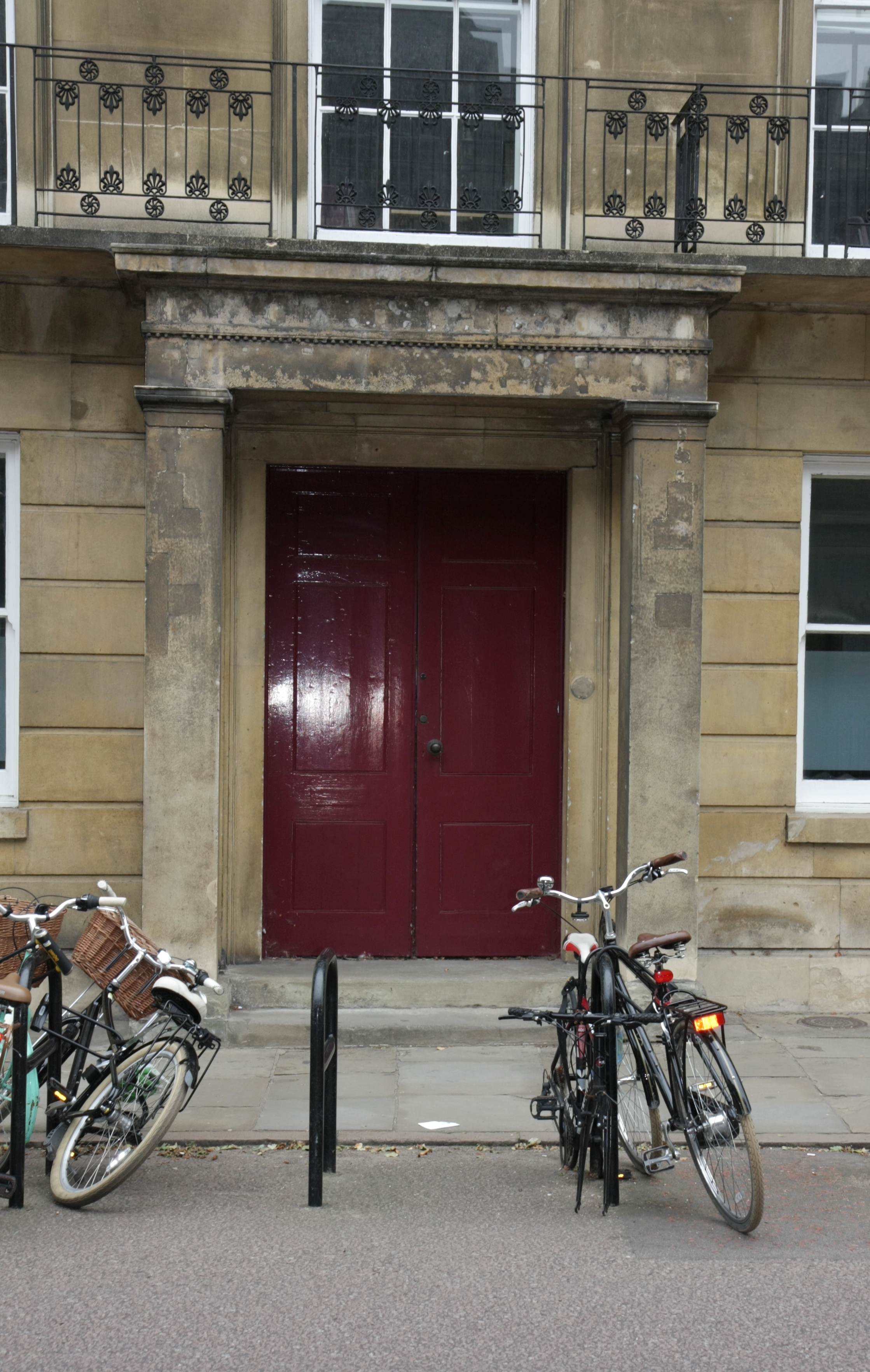|
The Bull Hotel, Cambridge
The Bull Hotel was a historic hotel located at 68 Trumpington Street, Cambridge, England, next to St Catharine's College. The four-storey hotel was built in 1828, and occupies the site of an inn previously known as the Black Bull, which was in existence as early as the fifteenth century. The Black Bull was bequeathed to St Catharine's College in 1626 and rebuilt in 1828 and opened as a hotel. In 1936 two " acanthus'" type posts were said to flank the stone ashlar porch of the Bull Hotel. It was one of the top hotels in Cambridge until the Second World War, when in 1941 the hotel became a centre for American serviceman. Photographs taken during the war show an American flag and a British flag on the hotel. At the end of the war the American servicemen established Bull College, named after the hotel and between 1945 and 1946 the hotel functioned as a centre for Russian courses for the British Army, but then merged with St Catharine's. The building became a Grade II listed buil ... [...More Info...] [...Related Items...] OR: [Wikipedia] [Google] [Baidu] |
Trumpington Street
Trumpington Street is a major historic street in central Cambridge, England. At the north end it continues as King's Parade where King's College is located. To the south it continues as Trumpington Road (the A1134), an arterial route out of Cambridge, at the junction with Lensfield Road. History In 1361, at Spittle End, the leper hospital of St Anthony and St Eligius was founded.Trumpington Street , ''800 Years of Death and Disease in Cambridge'', Stride Design Ltd, 2009. was founded in 1766 on Trumpington Street, but it has since relocated to larger premises further out of the city. The |
Cambridge
Cambridge ( ) is a university city and the county town in Cambridgeshire, England. It is located on the River Cam approximately north of London. As of the 2021 United Kingdom census, the population of Cambridge was 145,700. Cambridge became an important trading centre during the Roman and Viking ages, and there is archaeological evidence of settlement in the area as early as the Bronze Age. The first town charters were granted in the 12th century, although modern city status was not officially conferred until 1951. The city is most famous as the home of the University of Cambridge, which was founded in 1209 and consistently ranks among the best universities in the world. The buildings of the university include King's College Chapel, Cavendish Laboratory, and the Cambridge University Library, one of the largest legal deposit libraries in the world. The city's skyline is dominated by several college buildings, along with the spire of the Our Lady and the English Martyrs ... [...More Info...] [...Related Items...] OR: [Wikipedia] [Google] [Baidu] |
St Catharine's College, Cambridge
St Catharine's College is a constituent college of the University of Cambridge. Founded in 1473 as Katharine Hall, it adopted its current name in 1860. The college is nicknamed "Catz". The college is located in the historic city-centre of Cambridge, and lies just south of King's College and across the street from Corpus Christi College. The college is notable for its open court (rather than closed quadrangle) that faces towards Trumpington Street. St Catharine's is unique in being the only Oxbridge college founded by the serving head of another college. The college community is moderately sized, consisting of approximately 70 fellows, 150 graduate students, and 410 undergraduates. History Foundation Robert Woodlark, Provost of King’s College, had begun preparations for the founding of a new college as early as 1459 when he bought tenements on which the new college could be built. The preparation cost him a great deal of his private fortune (he was suspected of divert ... [...More Info...] [...Related Items...] OR: [Wikipedia] [Google] [Baidu] |
Bull Hostel Entrance
A bull is an intact (i.e., not castrated) adult male of the species ''Bos taurus'' (cattle). More muscular and aggressive than the females of the same species (i.e., cows), bulls have long been an important symbol in many religions, including for sacrifices. These animals play a significant role in beef ranching, dairy farming, and a variety of sporting and cultural activities, including bullfighting and bull riding. Due to their temperament, handling requires precautions. Nomenclature The female counterpart to a bull is a cow, while a male of the species that has been Castration, castrated is a ''steer'', ''Oxen, ox'', or ''bullock'', although in North America, this last term refers to a young bull. Use of these terms varies considerably with area and dialect. Colloquially, people unfamiliar with cattle may refer to both castrated and intact animals as "bulls". A wild, young, unmarked bull is known as a ''micky'' in Australia.Sheena Coupe (ed.), ''Frontier Country, V ... [...More Info...] [...Related Items...] OR: [Wikipedia] [Google] [Baidu] |



